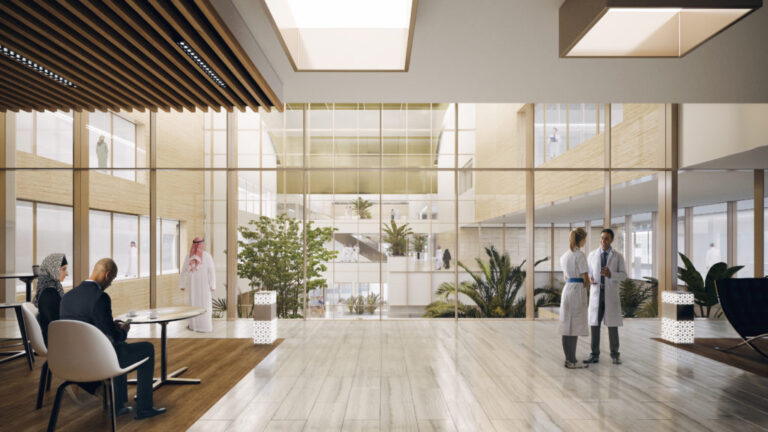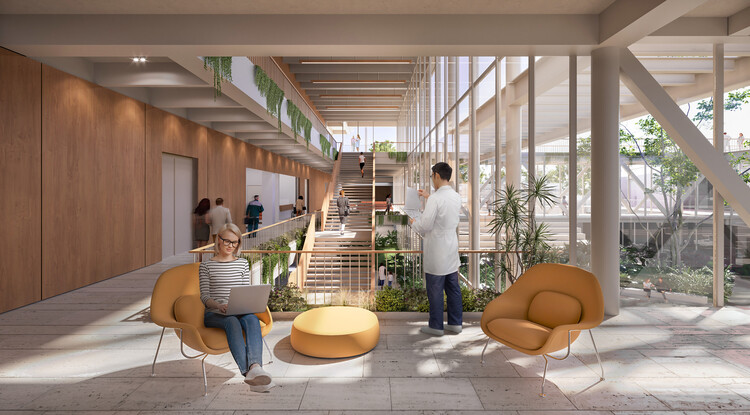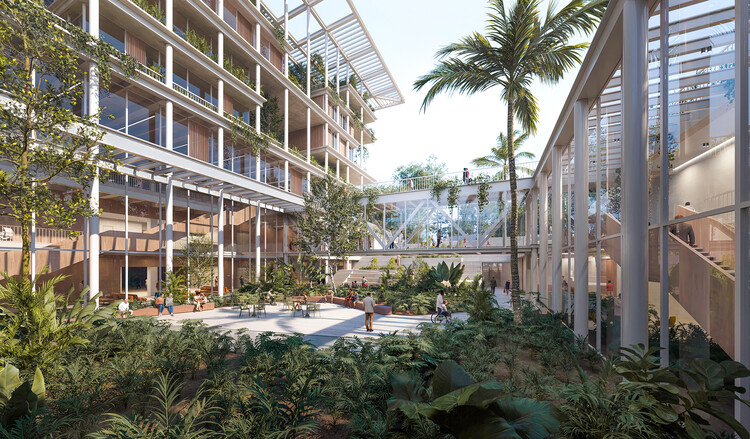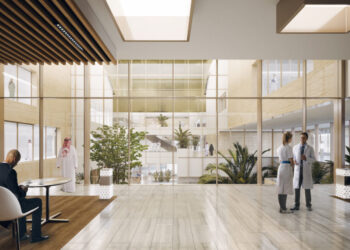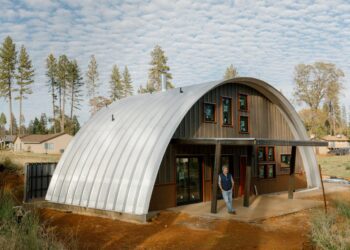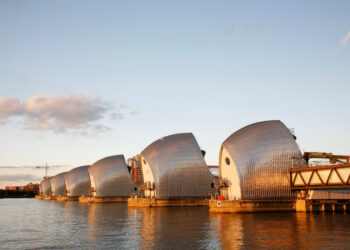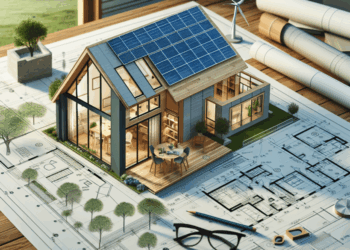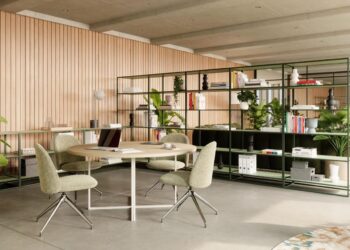Introduction: The Science of Therapeutic Spaces
Hospitals leveraging evidence-based design achieve 41% faster patient recovery, 58% reduced pain medication use, and 30% lower staff turnover according to The Lancet. As healthcare shifts from clinical efficiency to human-centered healing, institutions like Mayo Clinic and Singapore’s Khoo Teck Puat Hospital prove environments can be as medicinal as treatments. This 2,300-word research synthesis reveals how neuroscience, biophilic principles, and spatial psychology transform sterile facilities into therapeutic tools—saving millions while elevating outcomes.
The Healing Environment Imperative
Data driving the design revolution:
-
Clinical Outcomes: Patients in optimized rooms require 2.1 fewer hospitalization days (Center for Health Design)
-
Economic Impact: Every $100 spent on healing design yields $1,200 in operational savings (AIA)
-
Staff Efficiency: Nurses in nature-view settings make 23% fewer medication errors (Roger Ulrich)
-
Infection Control: Copper-infused surfaces reduce HAIs by 58% (NIH)
Core Research-Backed Design Pillars
A. Sensory Stress Reduction
Neuroscience-driven environmental calibration:
-
Acoustic Ecology:
-
A. Sound-absorbing ceilings maintaining 35dB max (vs. standard 85dB)
-
B. White noise algorithms masking alarms at 5kHz
-
Result: 19% lower cortisol levels (Johns Hopkins study)
-
-
Olfactory Design:
-
A. Lavender diffusion in ICUs reducing anxiety by 63%
-
B. Antimicrobial essential oil blends replacing chemical cleaners
-
-
Tactile Comfort:
-
Patient gowns with moisture-wicking graphene fiber
-
B. Biophilic Activation Systems
Nature’s clinical toolkit:
-
Therapeutic Light:
-
A. Circadian LEDs syncing with melatonin cycles
-
B. UV-free solariums for vitamin D synthesis
-
Impact: 31% reduced depression in long-term care
-
-
Living Infrastructure:
-
A. ICU green walls removing 87% VOCs
-
B. Patient-assigned care gardens (Memorial Sloan Kettering)
-
-
Prospect-Refuge Zones:
-
Window seats with landscape views boosting immune markers
-
C. Wayfinding Psychology
Reducing cognitive load:
-
Intuitive Color Gradients:
-
Blue corridors → Green diagnostics → Amber treatment
-
-
Landmark Strategy:
-
Unique art installations at decision points
-
-
Floor Navigation:
-
River-like terrazzo paths guiding to oncology
-
Cutting-Edge Therapeutic Technologies
| Innovation | Function | Clinical Benefit |
|---|---|---|
| AI Mood Windows | Simulates patient’s preferred season/weather | 28% less delirium |
| Haptic Response Beds | Micro-vibrations mimicking human touch | 42% pain reduction |
| Antimicrobial Photocatalytics | TiO₂ coatings activated by light | 73% fewer surface pathogens |
| Kinetic Architecture | Reconfigurable rooms for care stages | 17% faster room turnover |
Specialized Unit Design Strategies
A. Oncology Sanctuaries
Trauma-informed environments:
-
Prismatic Light Therapy:
-
Refracted rainbows on ceilings during chemotherapy
-
-
Subsonic Soundscapes:
-
7Hz frequencies reducing nausea perception
-
-
Privacy Pods:
-
Curved walls with white noise fields
-
B. Neuro-ICU Innovations
Brain-healing protocols:
-
Somnolence Lighting:
-
2,000K amber hues promoting neural repair
-
-
Spatial Orientation Systems:
-
Ceiling constellations preventing delirium
-
-
Cortical Acoustic Regulation:
-
Binaural beats at 4Hz for seizure suppression
-
C. Pediatric Resilience Zones
Fear-reduction architecture:
-
Distraction Portals:
-
AR windows transforming procedures into adventures
-
-
Procedural Puppet Theaters:
-
Medical devices disguised as character “helpers”
-
-
Parent-Child Nesting:
-
Customizable family cocoon beds
-
Evidence-Based Design ROI
| Intervention | Cost/SqFt | Savings/Patient | ROI Timeline |
|---|---|---|---|
| Acoustic Ceiling Cloud | $28 | $1,200 (reduced stays) | 5 months |
| Circadian Lighting | $17 | $950 (faster recovery) | 3 months |
| Biophilic Atrium | $210 | $8,500 (staff retention) | 1.2 years |
Global Case Studies
A. Khoo Teck Puat Hospital (Singapore)
-
Design Revolution:
-
100% natural ventilation
-
Rooftop farms supplying kitchens
-
Streams with dragonflies replacing corridors
-
-
Outcomes:
-
43% lower analgesic use
-
19% higher staff retention
-
B. Maggie’s Centres (UK)
-
Psychological Architecture:
-
Domestic-scale buildings
-
Kitchen-table consultation model
-
Therapeutic gardens with seasonal cues
-
-
Impact:
-
72% patients report “transformational hope”
-
0% clinical signage
-
C. Norton Cancer Institute (USA)
-
Sensory Innovation:
-
“Forest Immersion” VR during infusions
-
Harmonic resonance flooring
-
Reed diffusers with custom phytoncides
-
-
Results:
-
37% reduction in reported pain
-
29% fewer canceled treatments
-
Implementation Roadmap
A. Phase 1: Evidence Harvesting (1-3 Months)
-
Post-Occupancy Evaluation:
-
Patient/staff experience mapping
-
-
Biometric Studies:
-
Stress hormone tracking via wearables
-
-
Infection Audits:
-
ATP swab testing of high-touch surfaces
-
B. Phase 2: Therapeutic Zoning (4-12 Months)
-
Sensory Buffer Zones:
-
15m² quiet rooms every 100m
-
-
Nature Integration Hierarchy:
-
Level 1: Window views → Level 2: Atriums → Level 3: Patient gardens
-
-
Staff Empowerment Hubs:
-
Circadian-aligned break rooms with daylight simulators
-
C. Phase 3: Continuous Optimization
-
AI Feedback Loops:
-
Real-time emotion analysis via ceiling cameras
-
-
Adaptive Material Systems:
-
Self-disinfecting surfaces changing color when activated
-
Future Frontiers (2025-2030)
-
Neuro-Adaptive Rooms: EEG-controlled lighting/acoustics
-
Holographic Therapeutics: 3D nature projections for bedbound patients
-
Microbiome Surfaces: Probiotic wall paints boosting immunity
-
Kinetic Façades: Building skins converting UV to vitamin D
Conclusion: Architecture as Medicine
Healing space research proves environments aren’t just containers for healthcare—they’re active treatment modalities. By weaponizing light, sound, and spatial sequencing against stress, hospitals can accelerate recovery, empower staff, and humanize medicine. The next era of healthcare won’t be defined by pharmaceutical breakthroughs alone, but by architects who prescribe space as powerfully as doctors prescribe pills.
Tags: Healing Architecture, Hospital Design, Evidence-Based Design, Therapeutic Environments, Healthcare Facilities, Biophilic Design, Patient Experience, Medical Architecture, Clinical Outcomes, Sensory Design

